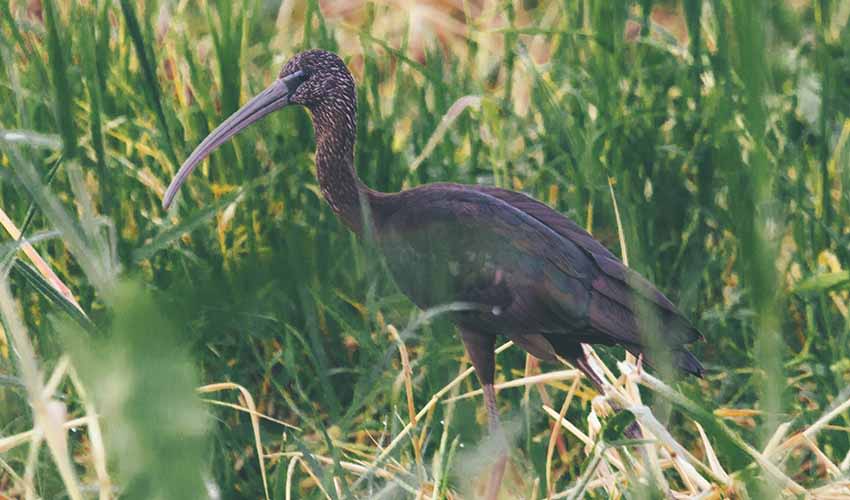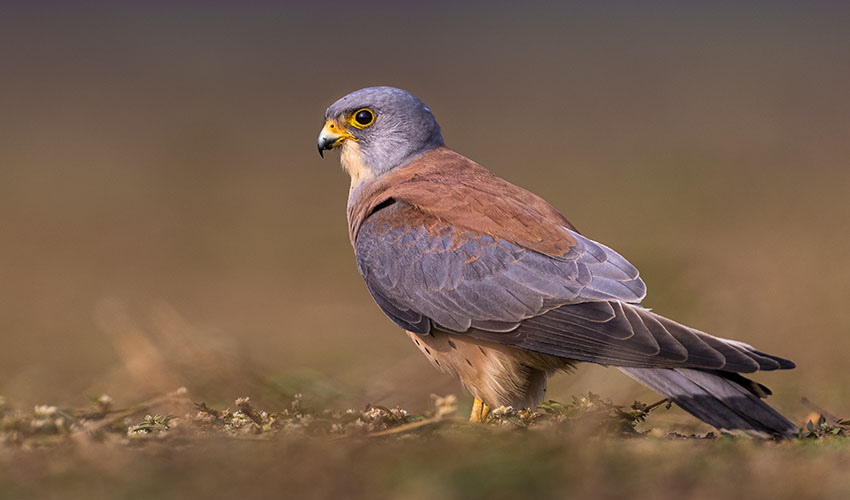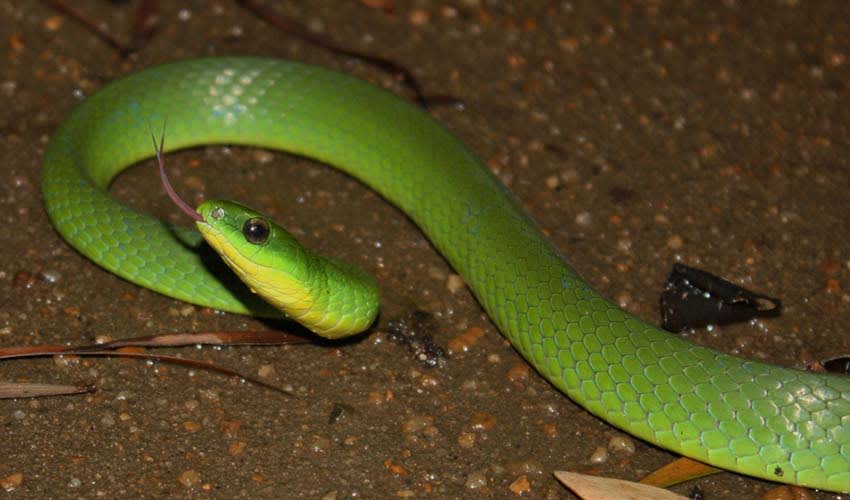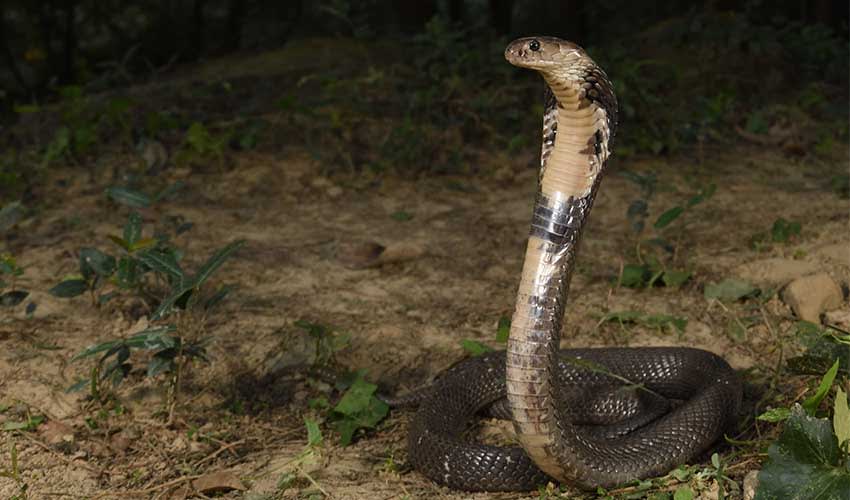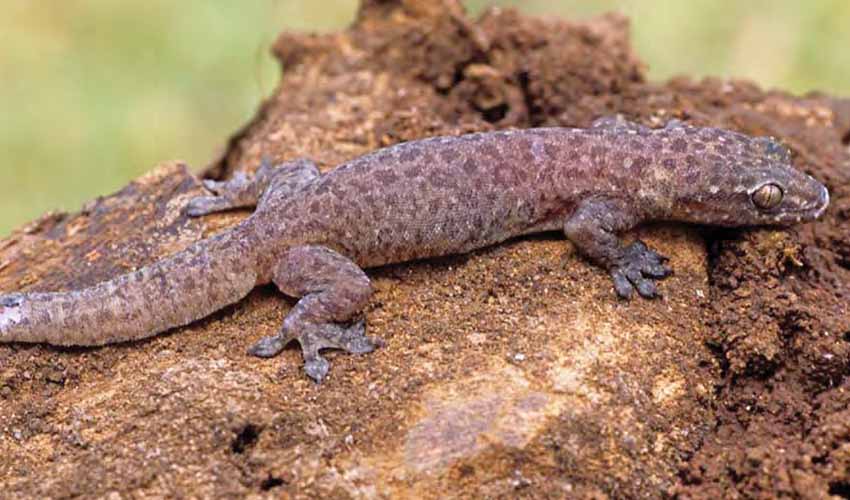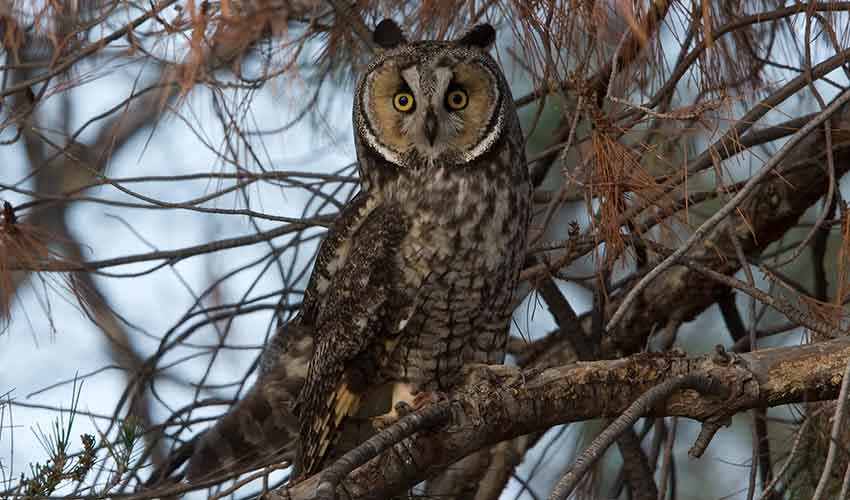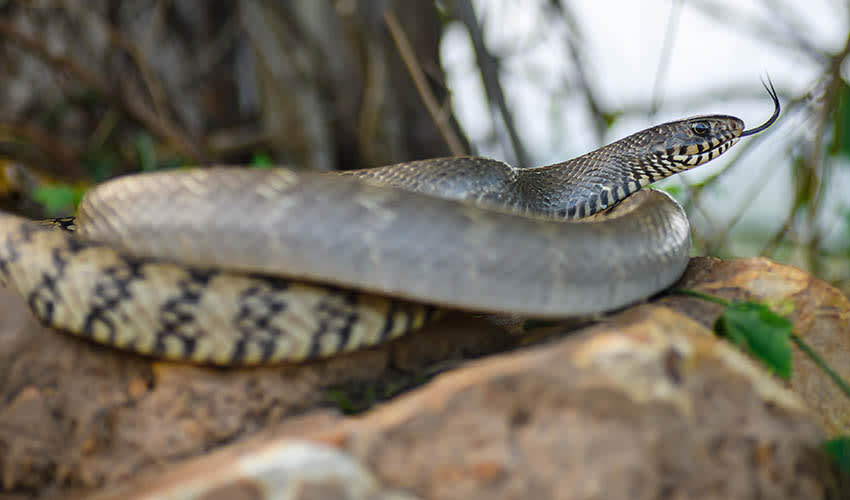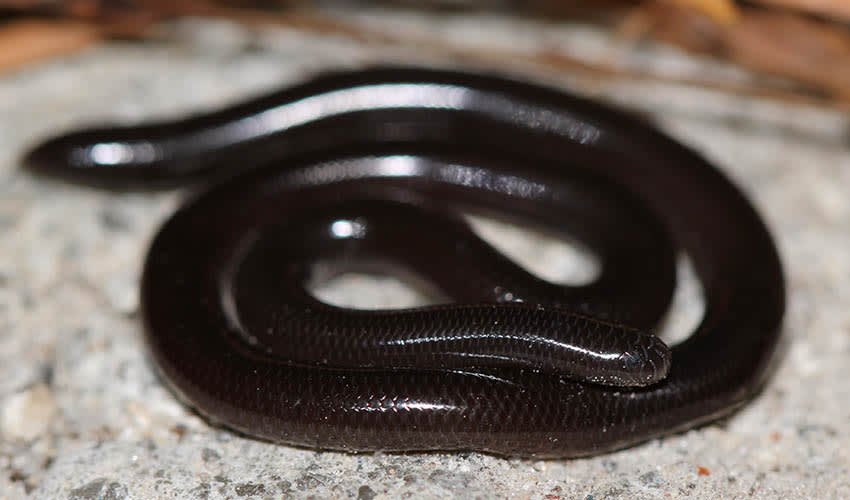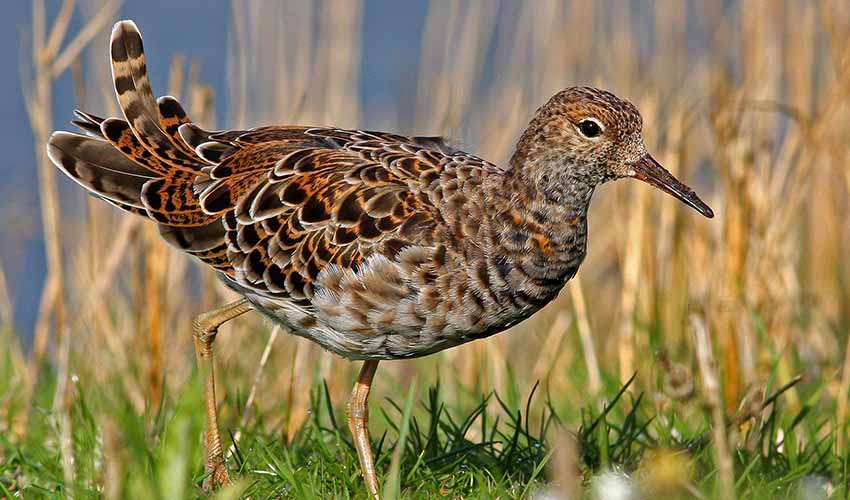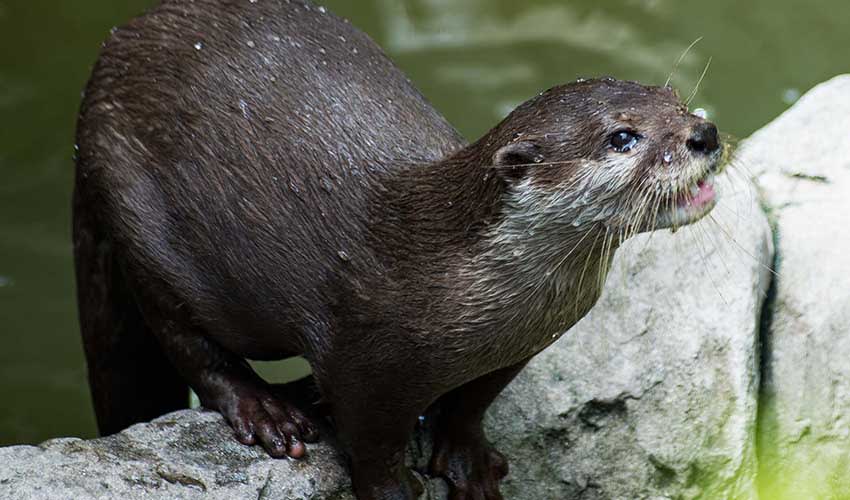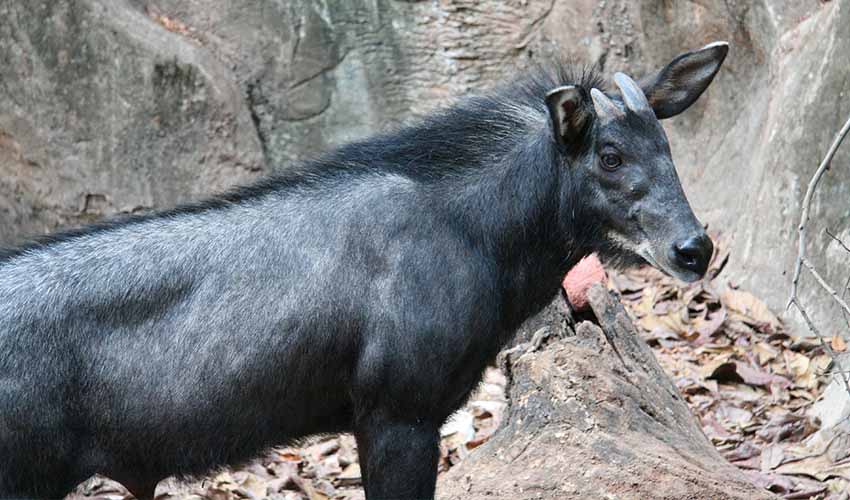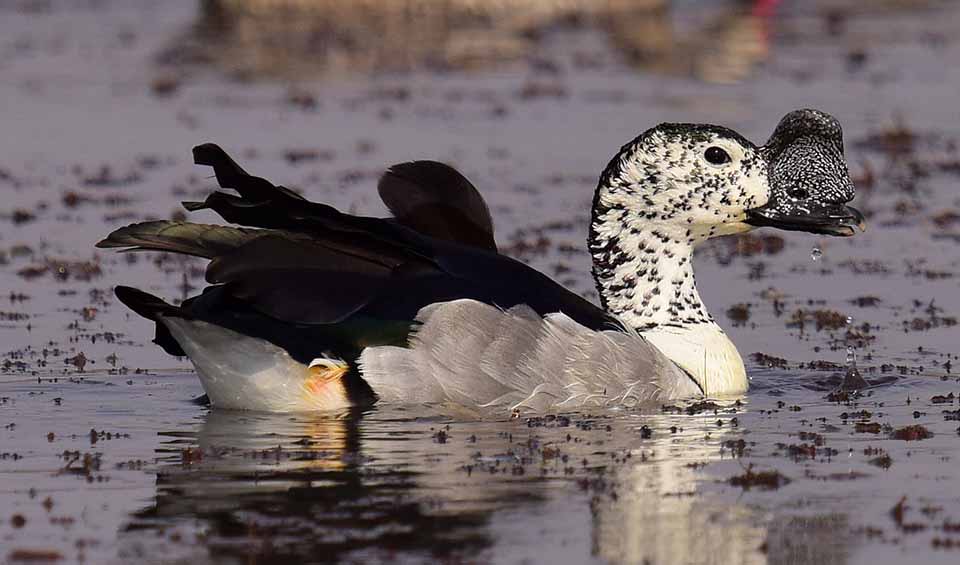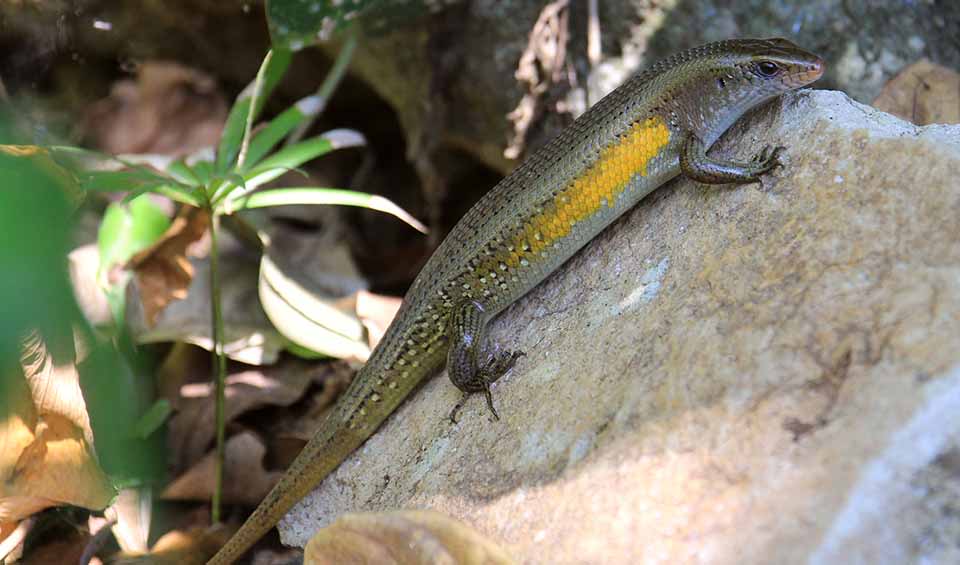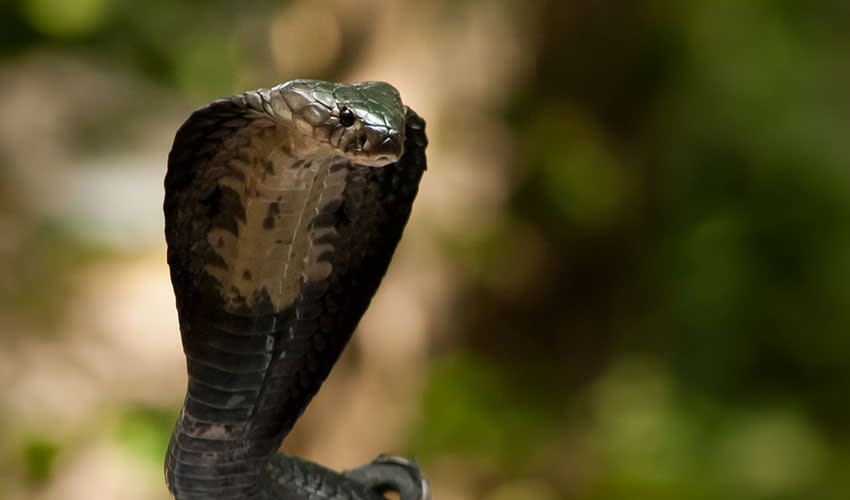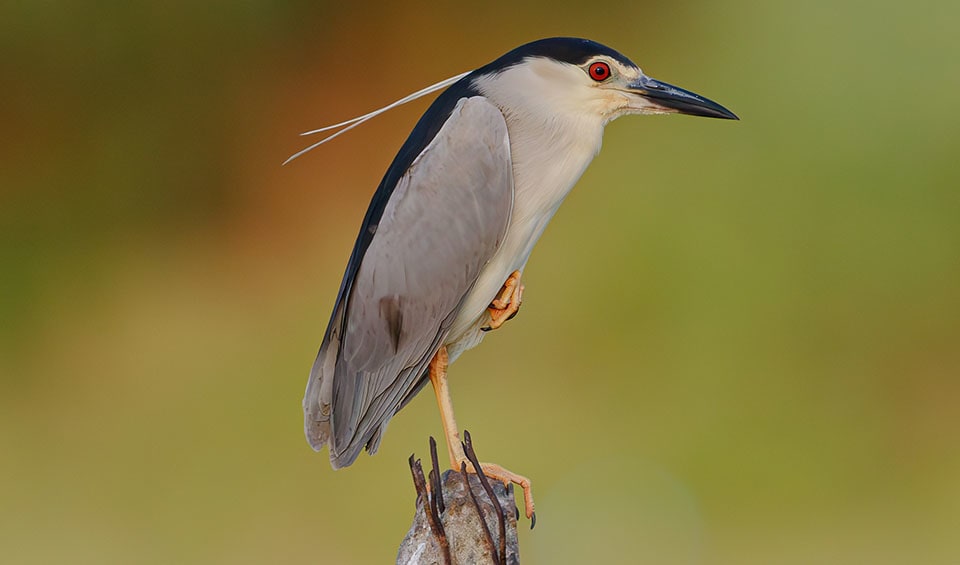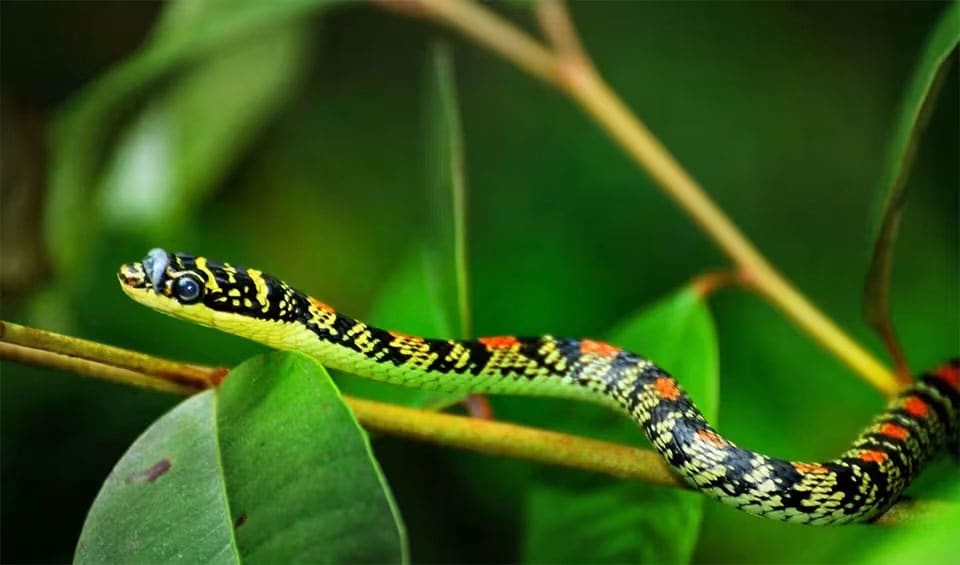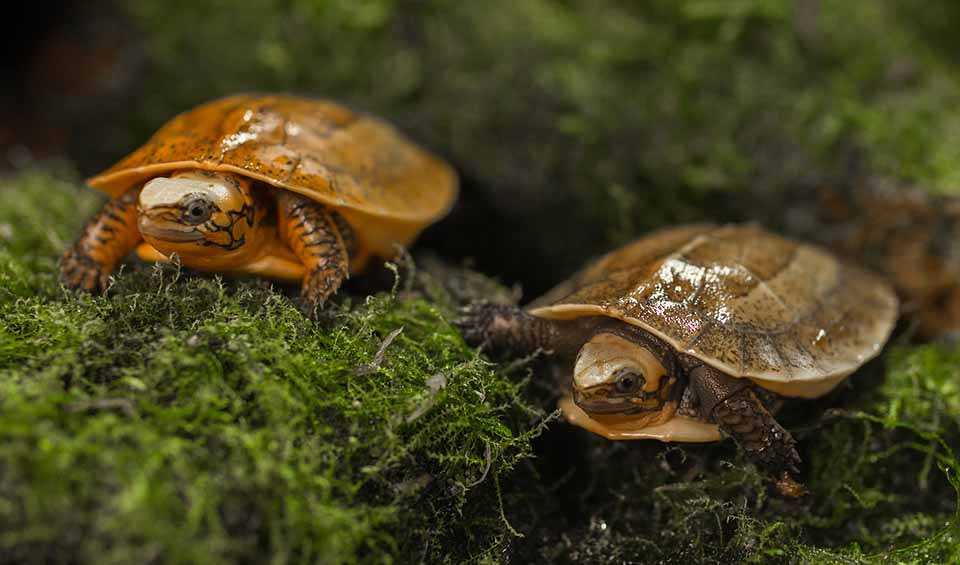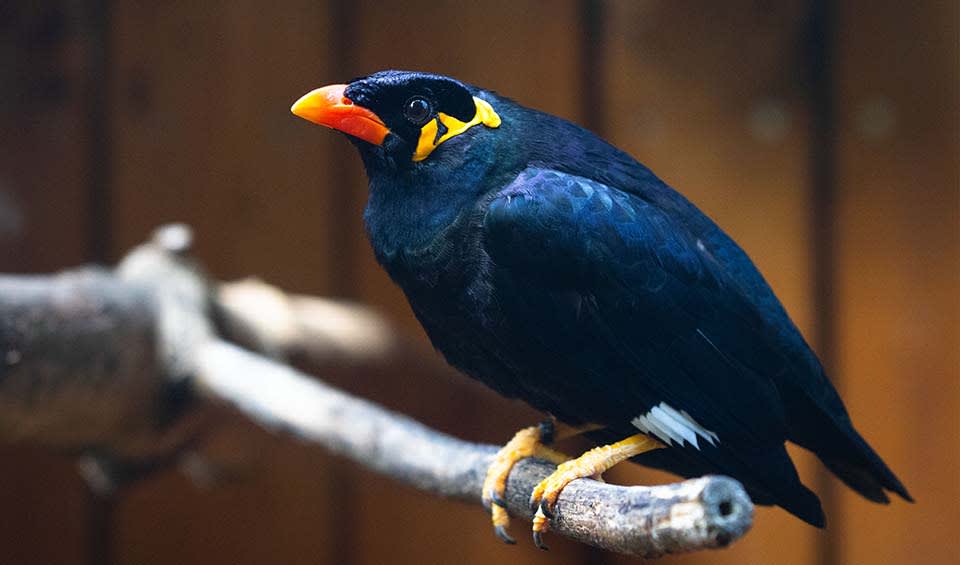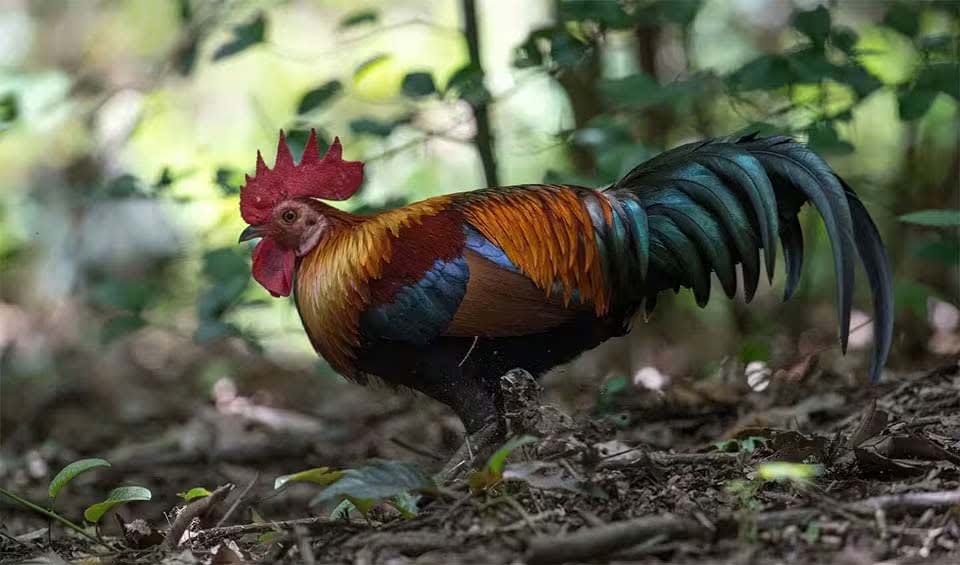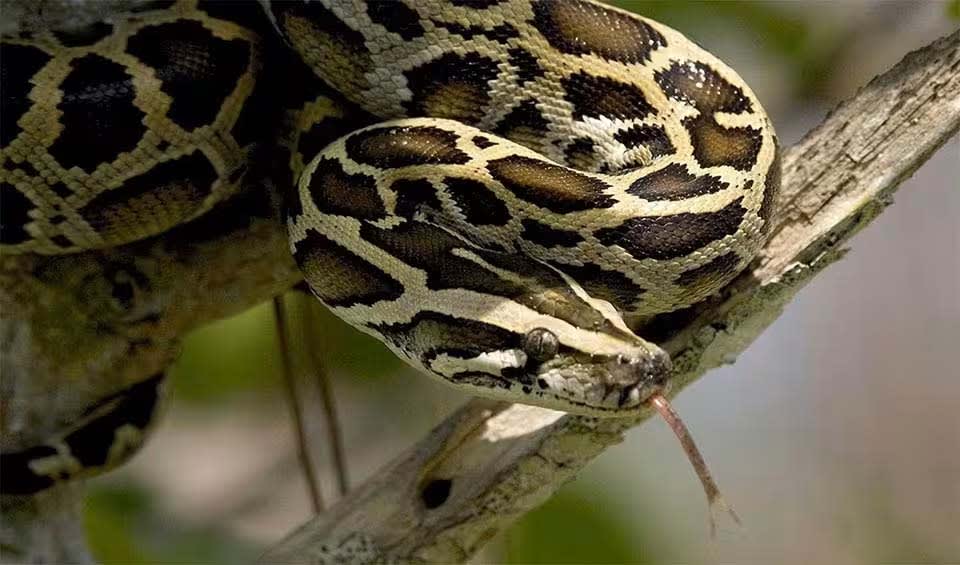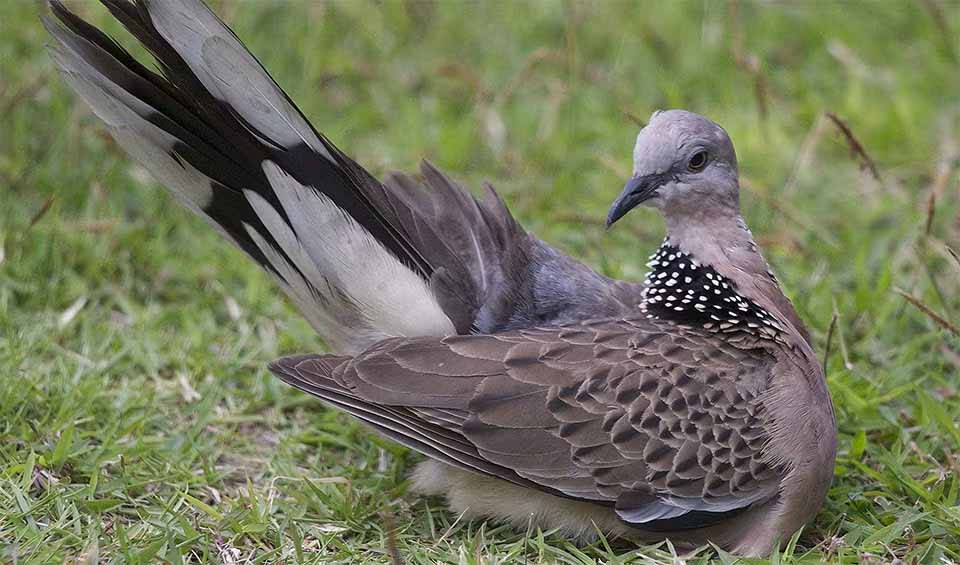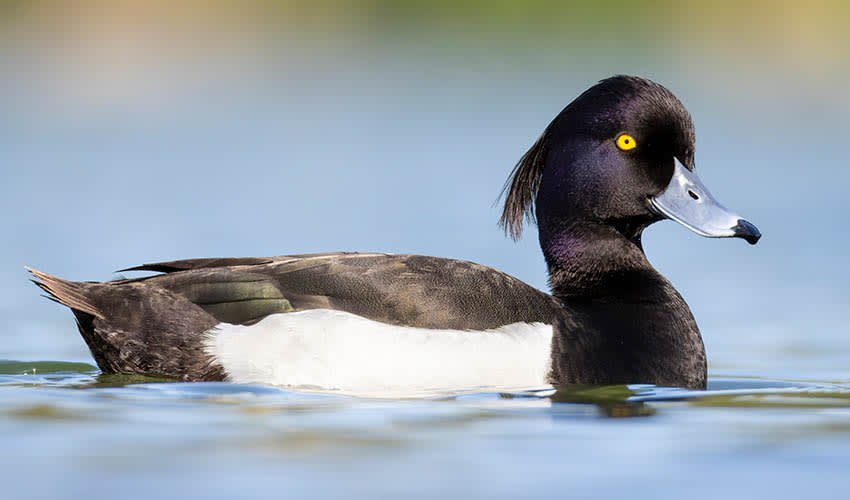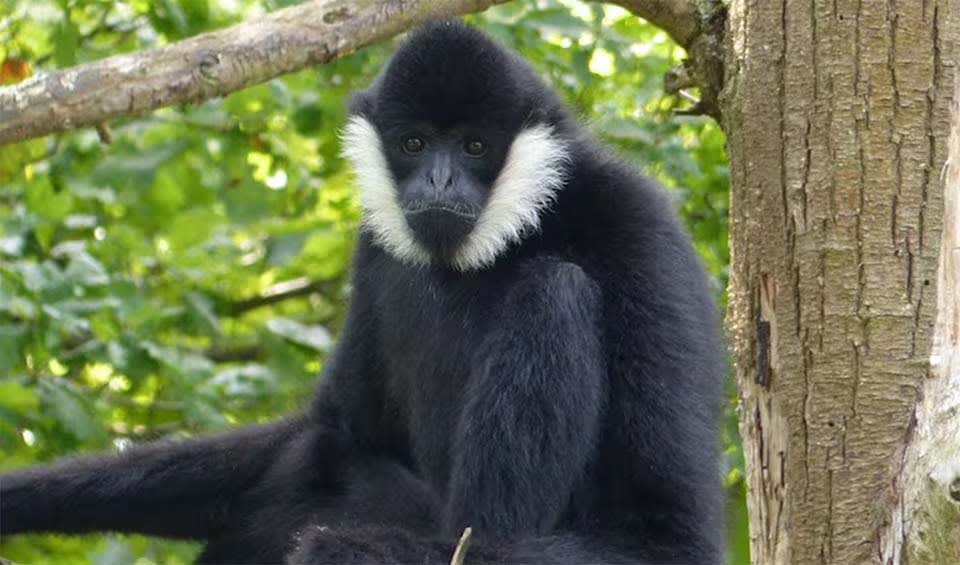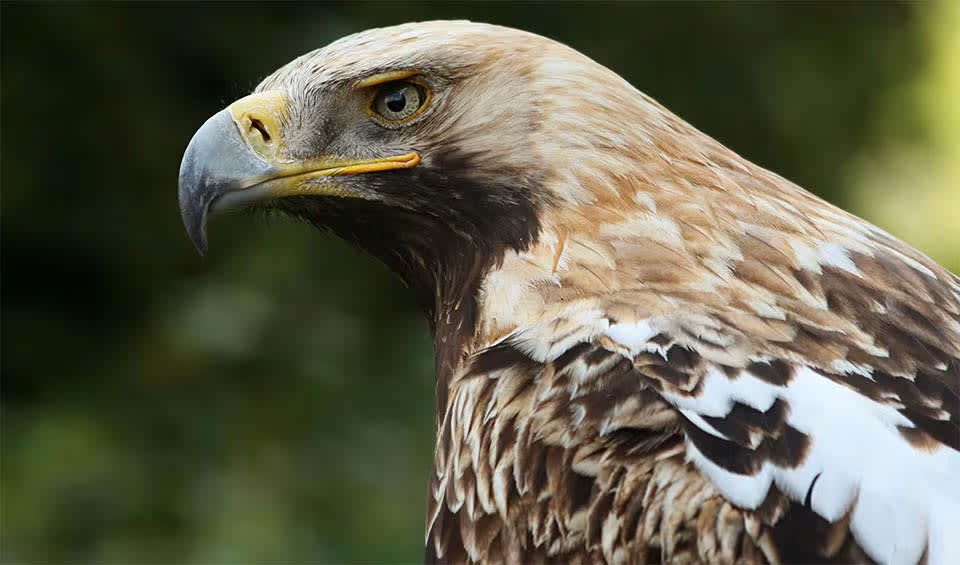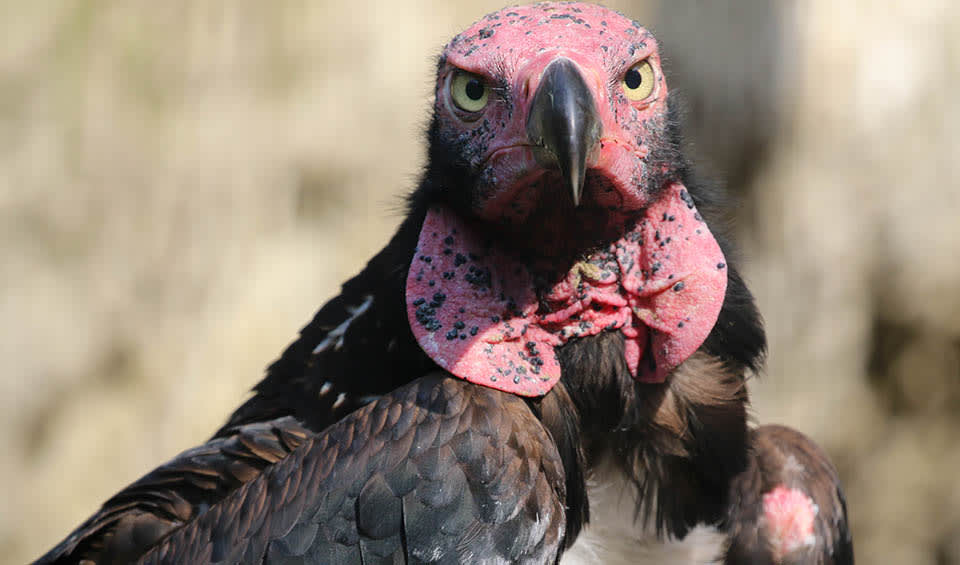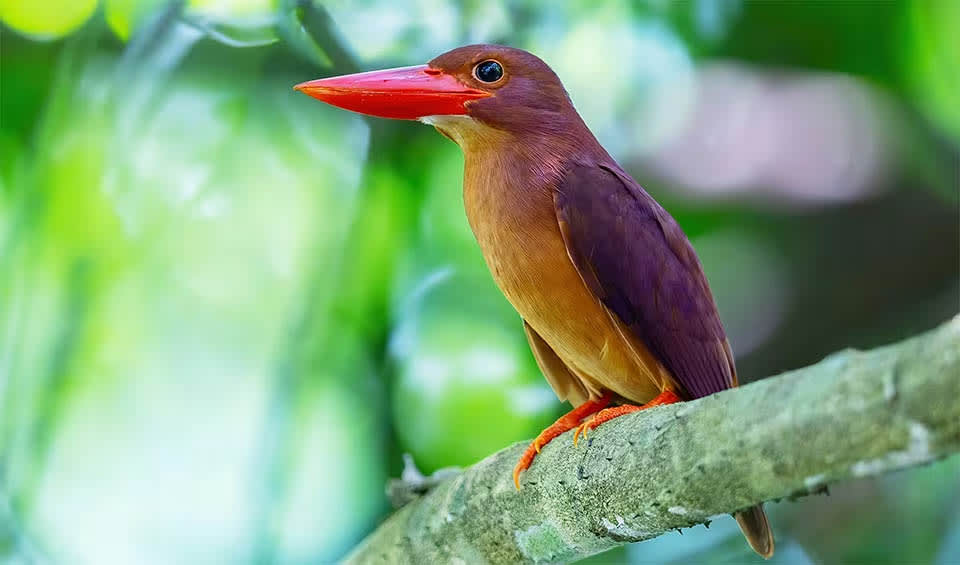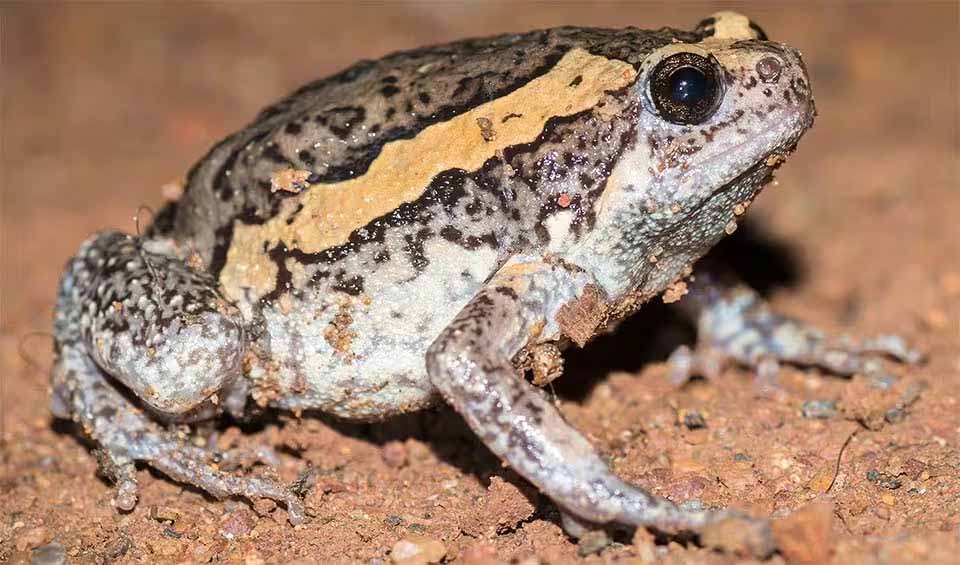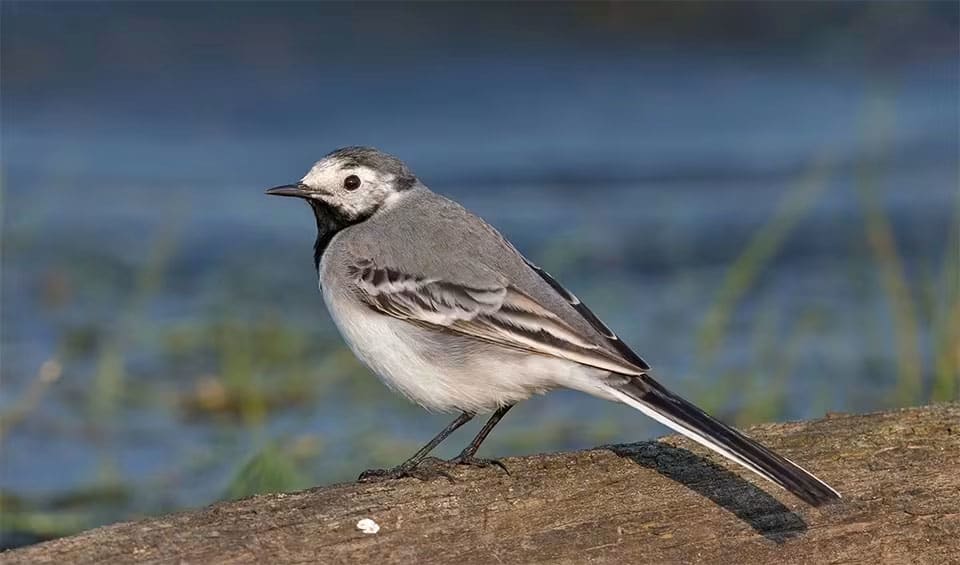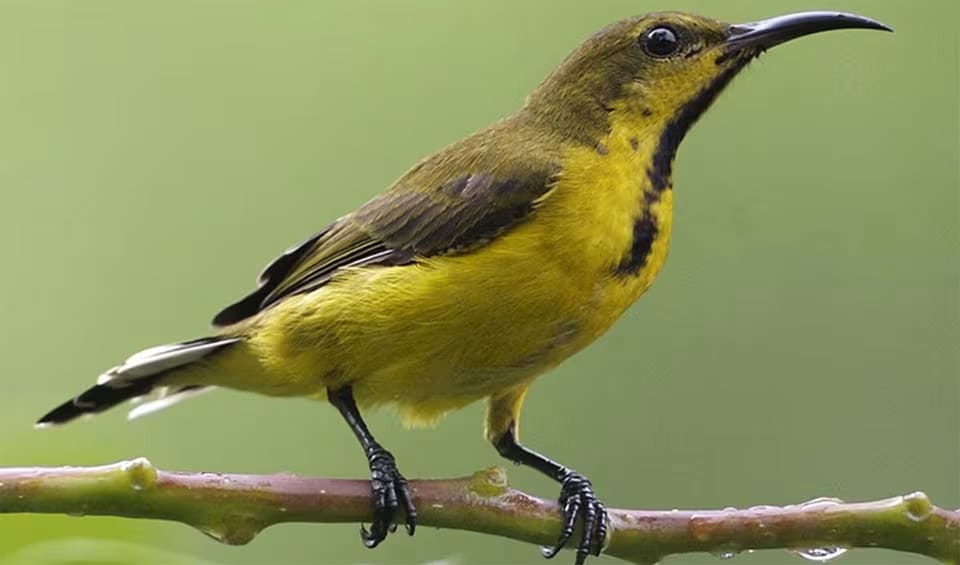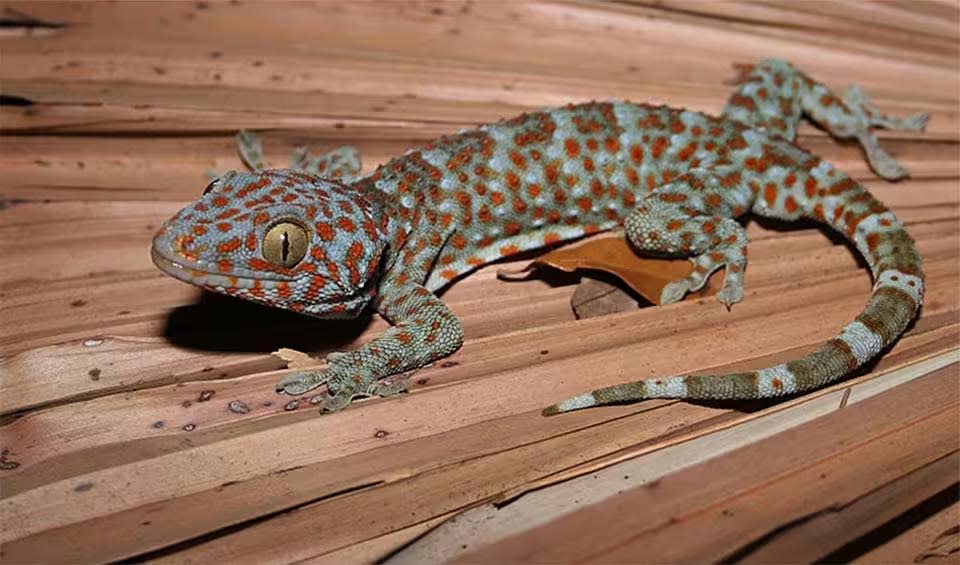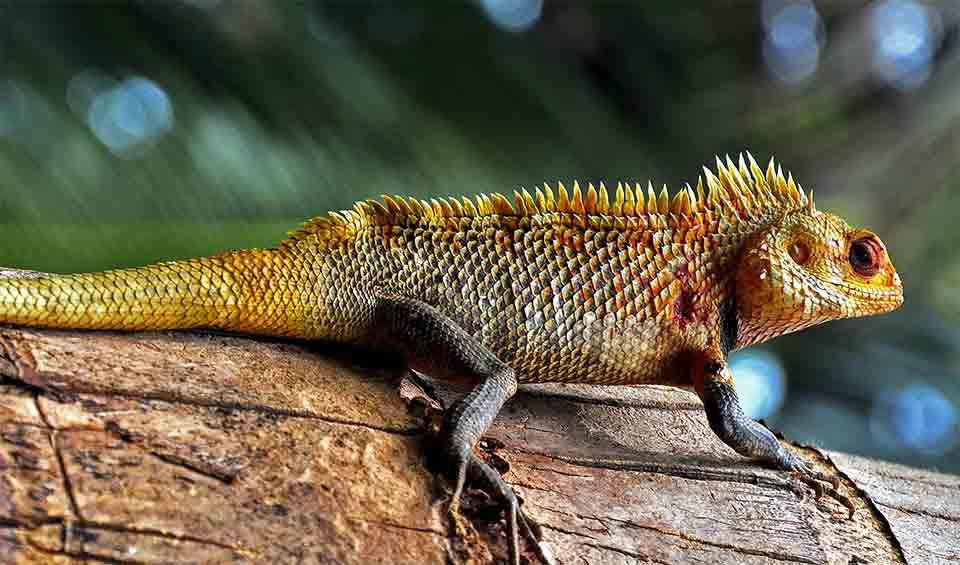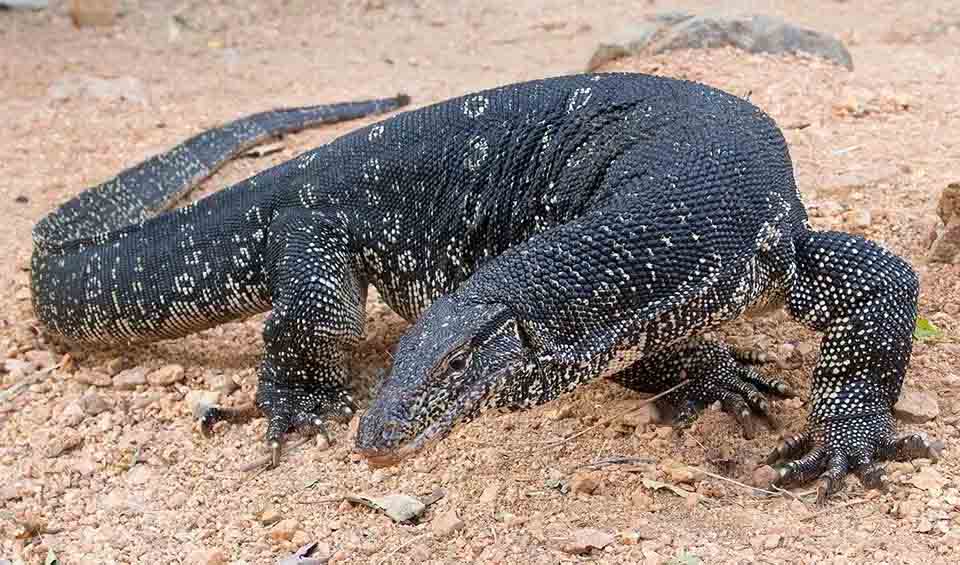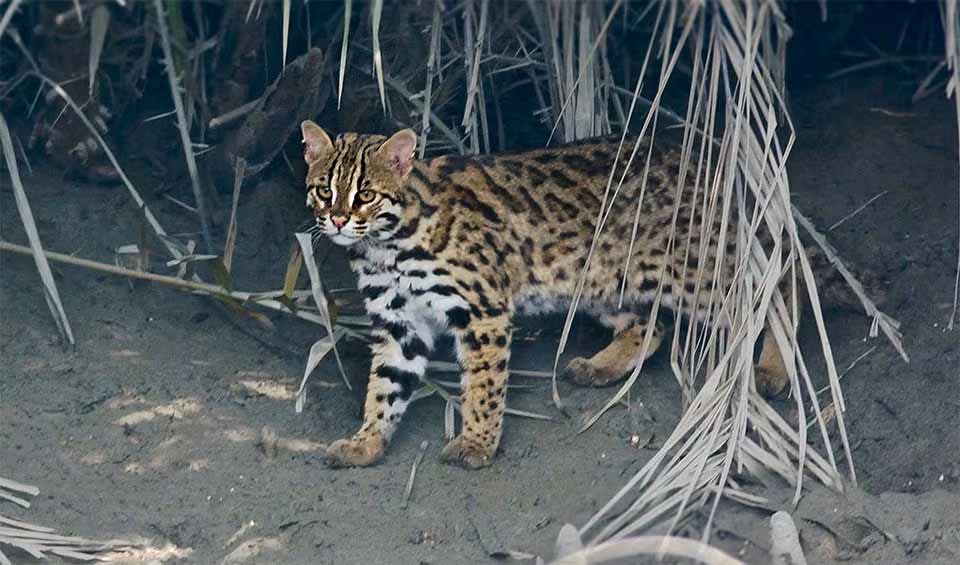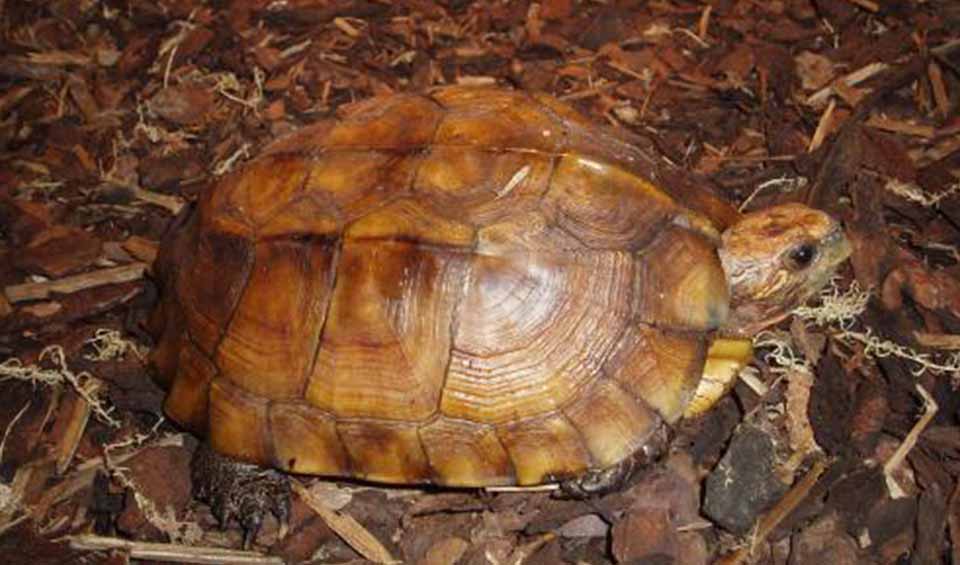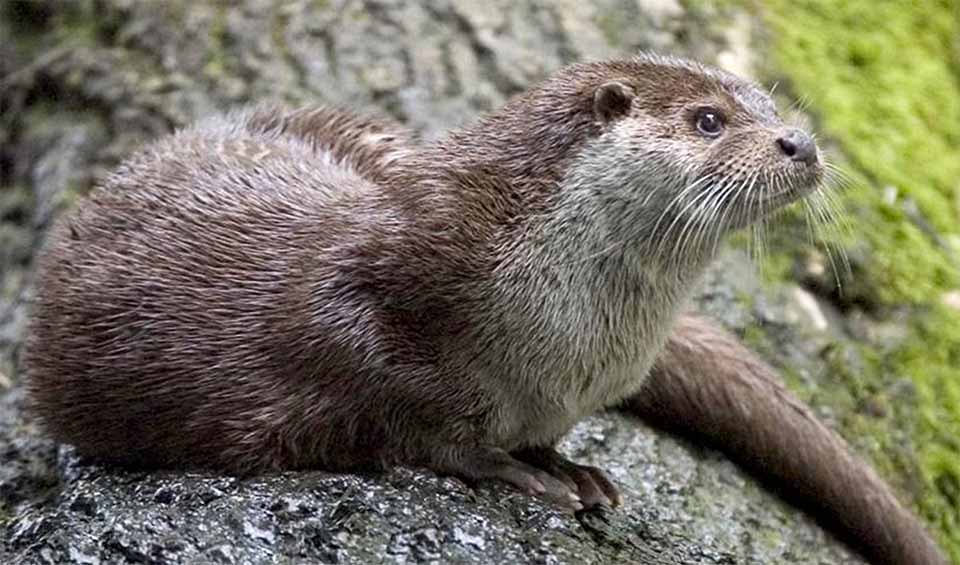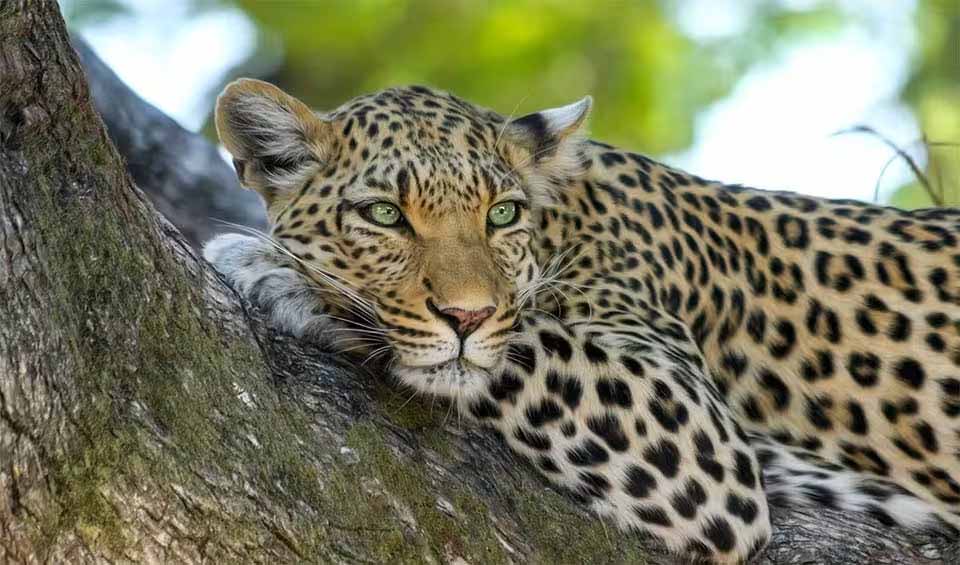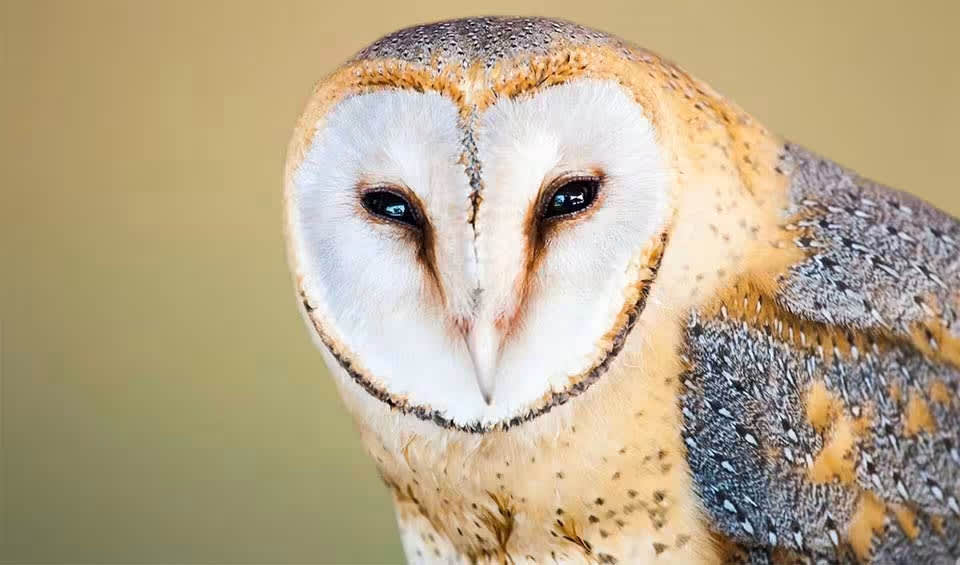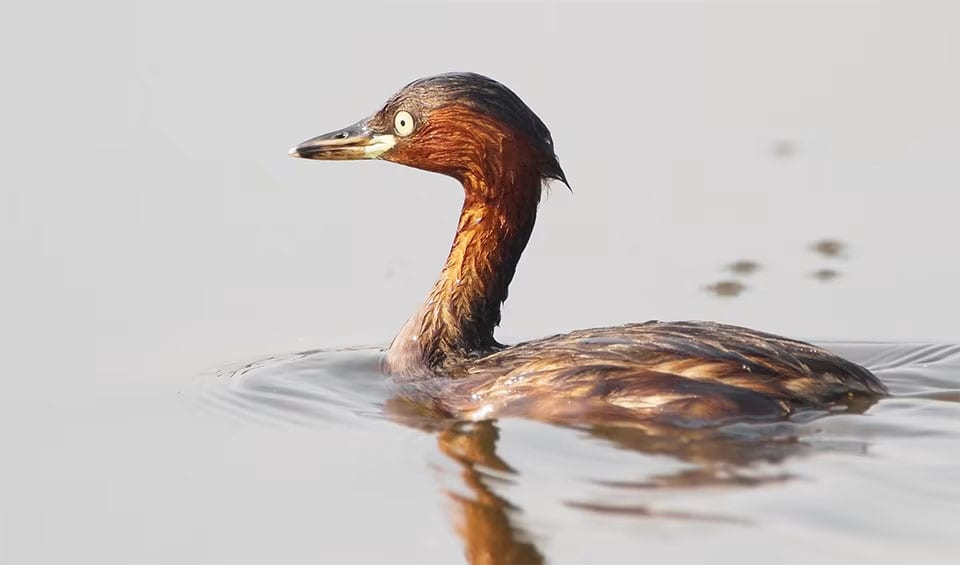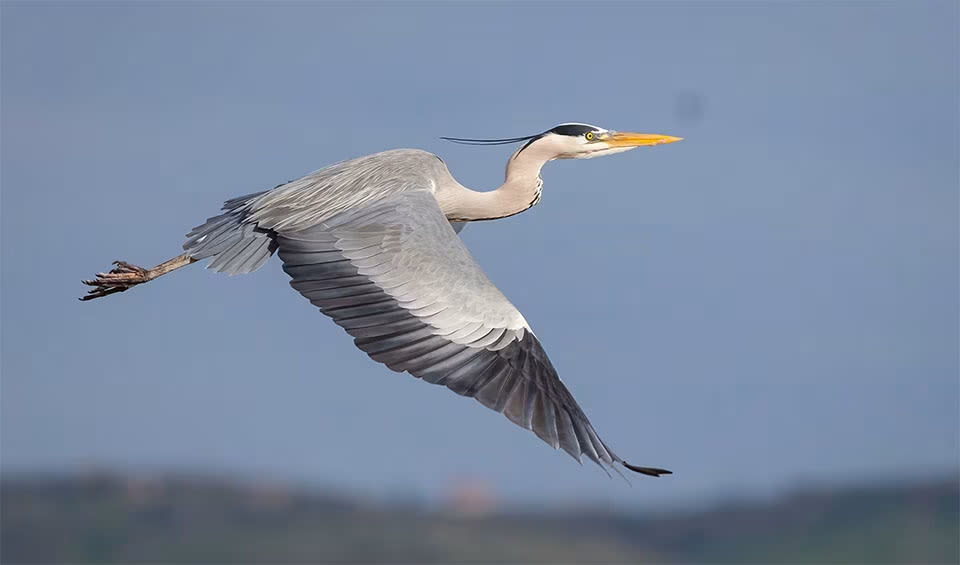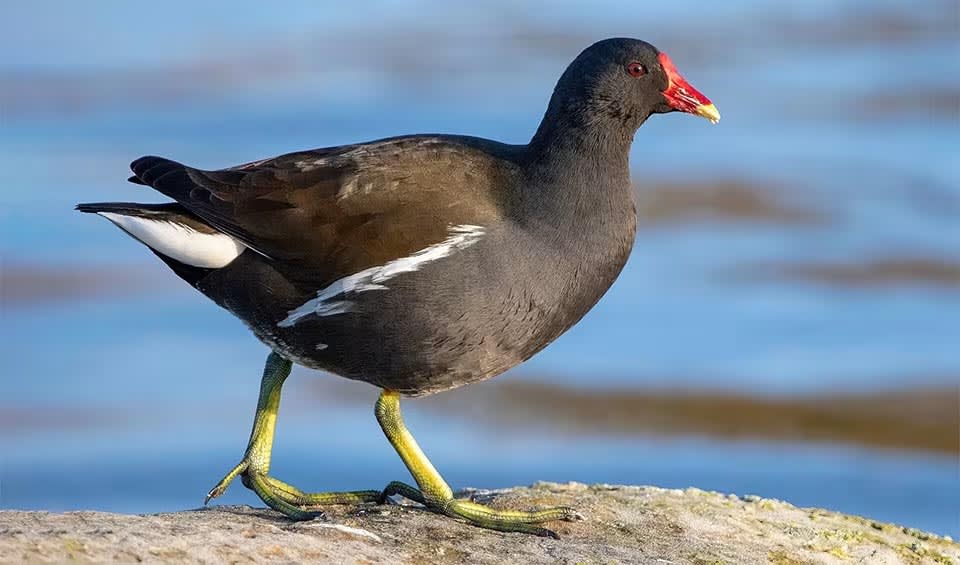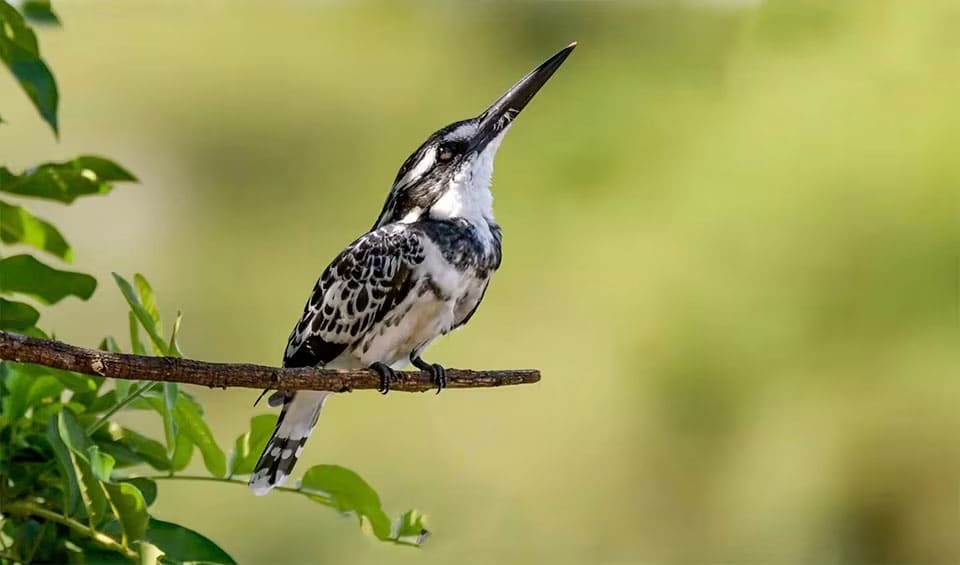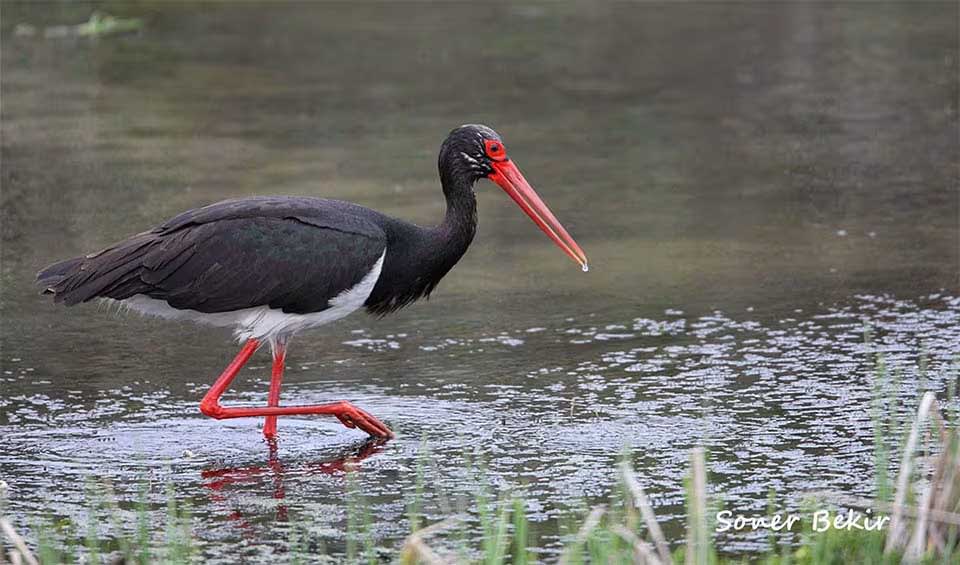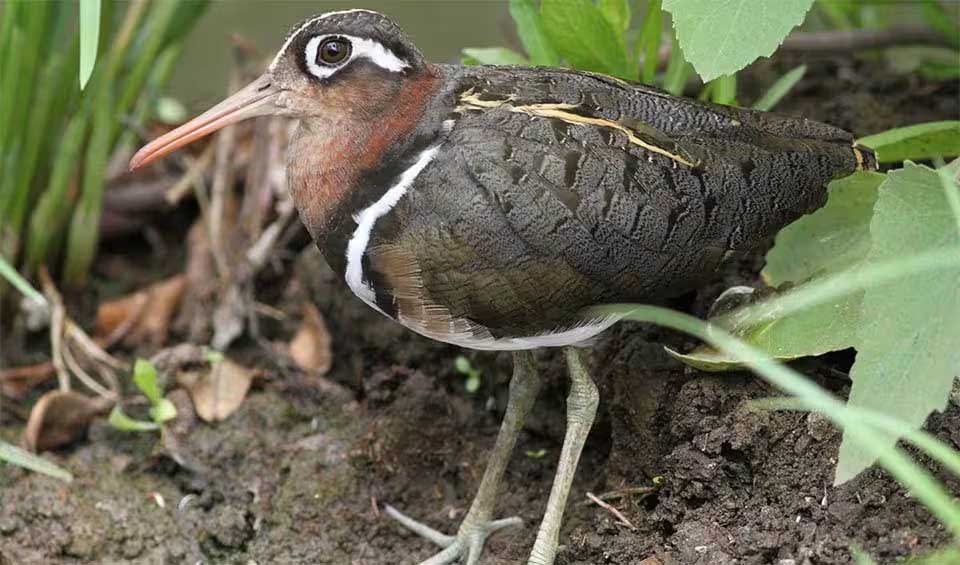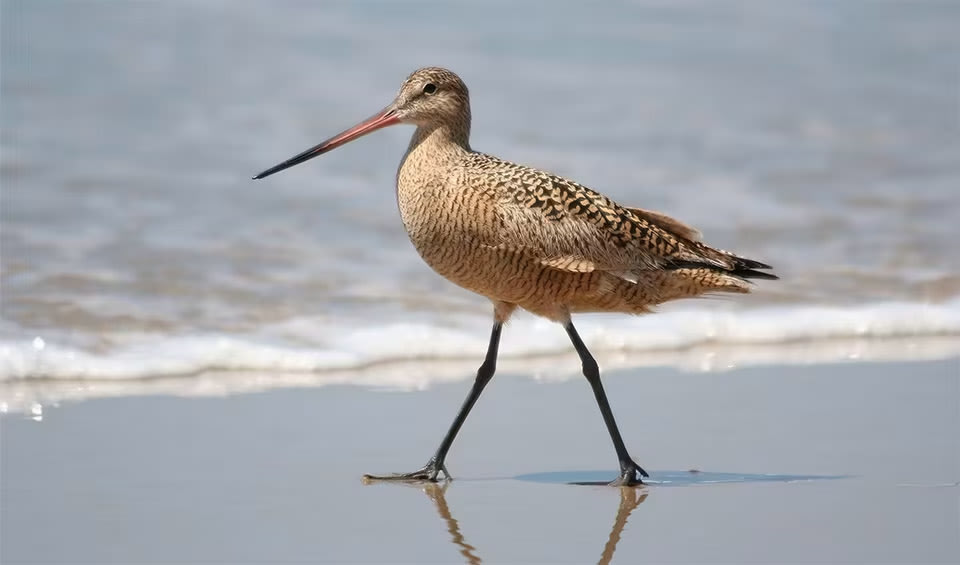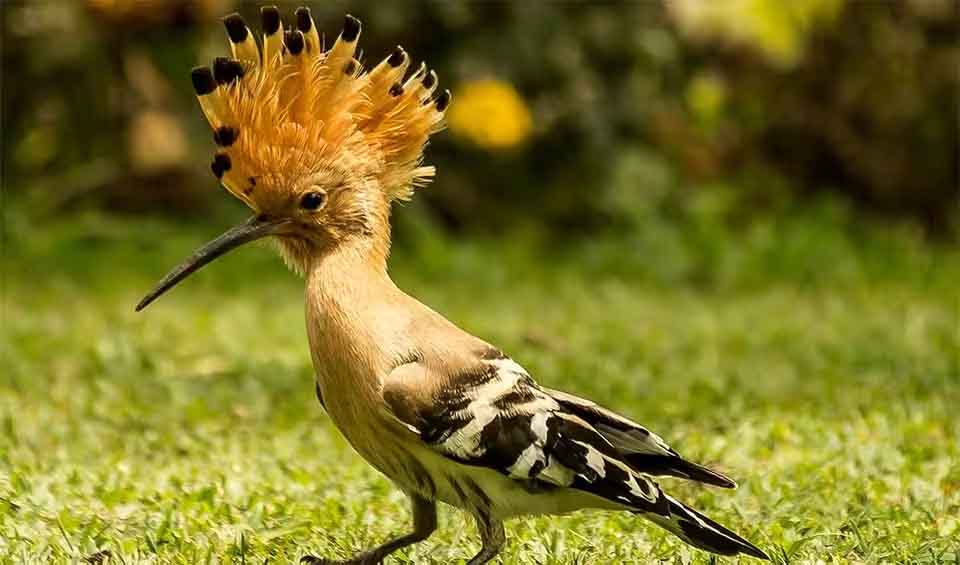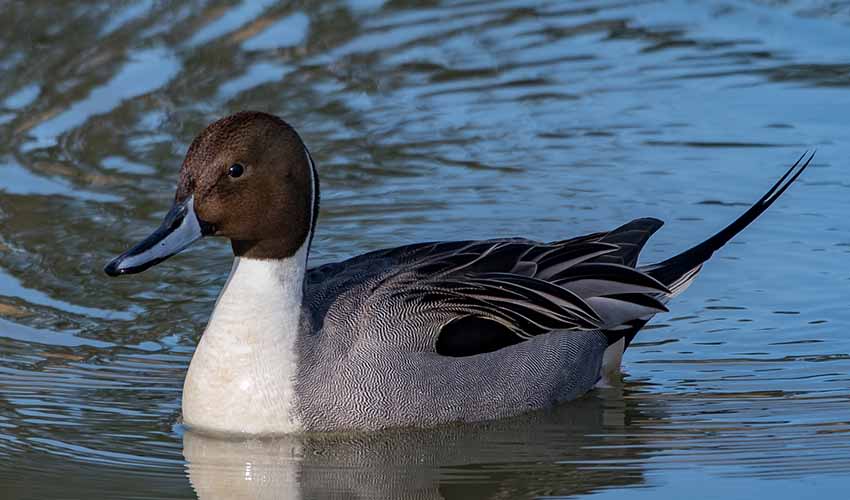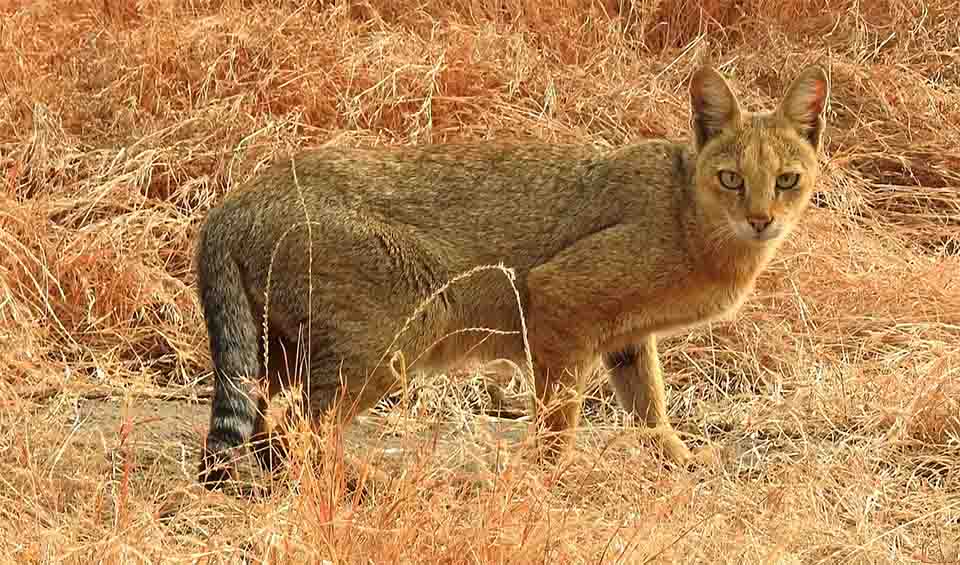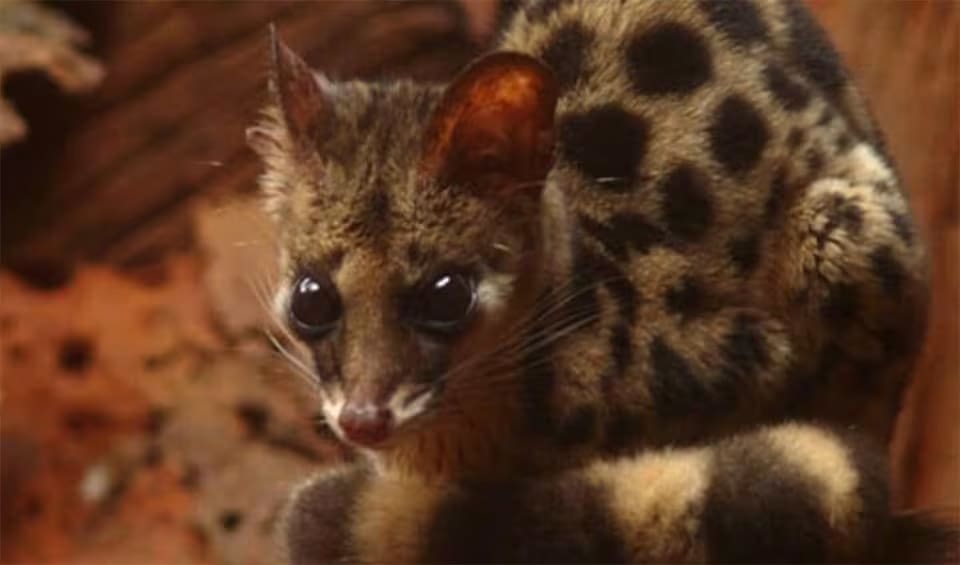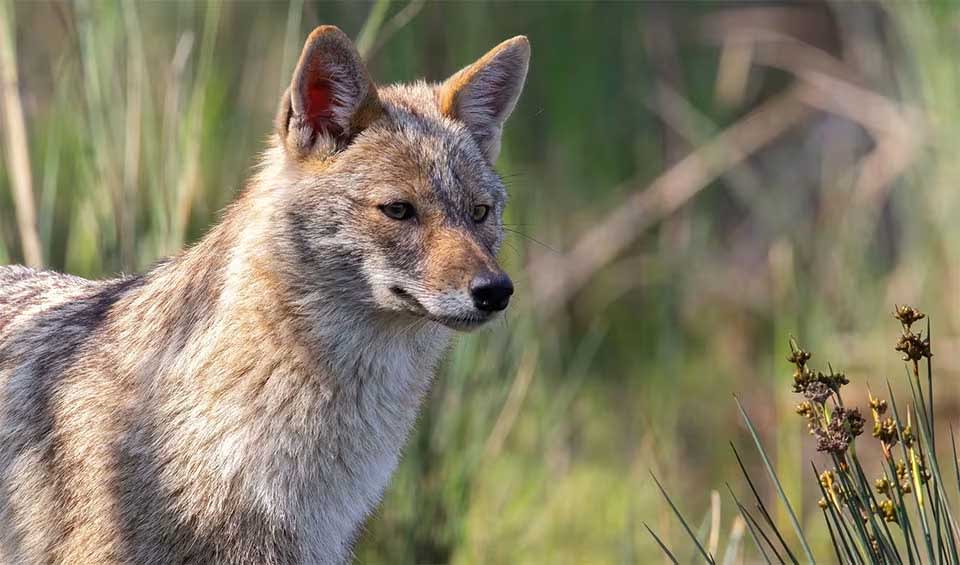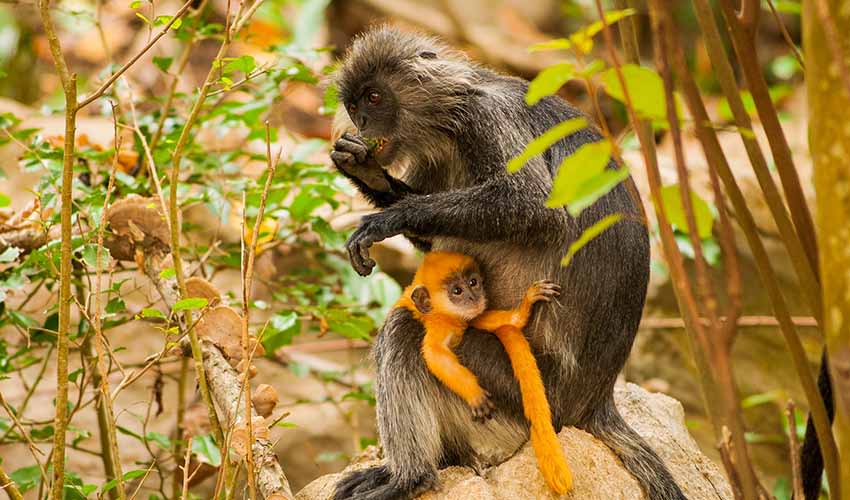Search for Laos
Chinese ferret-badger
Closer in size to a ferret than a true badger
Crab-eating mongoose
One of the few with webbing between its toes, helping it walk through water and grab slippery prey
Northern red muntjac
Literally barks like a dog—hence the nickname “barking deer”
Indian hog deer
It runs like a pig — not a deer
Giant ibis
Has a distinctly ancient look and is often described as a bird that “looks like it walked out of the Pleistocene”
White-shouldered ibis
One of the few ibis species that prefers dry forests over wetlands, making its ecology quite unusual
White-winged duck
One of the largest living ducks, often heavier than many geese
Baer’s pochard
Its decline was so rapid and poorly tracked that conservationists only realized how critical the situation was in the early 2000s
Eurasian bittern
Its boom has been compared to blowing across the top of a giant bottle — a sound low enough to feel in your chest on still mornings
Greater spotted eagle
More active on overcast or slightly rainy days, when amphibians are abundant and easier to catch
Lesser kestrel
Rather than hovering constantly, they often glide and make short flutters to conserve energy in open landscapes
Caspian tern
A heavyweight champ — elegant, yes, but you don’t want to mess with that beak
Malayan pit viper
Can stay completely motionless for hours or even days, waiting for an unsuspecting rodent to wander by
Burmese glass lizard
No need to double check, it is not a snake!
Hart’s glass lizard
It’s not a snake! Can blink and hear—two things snakes can’t do
Indo-Chinese forest lizard
How to express emotion? Turn brighter during excitement or darker when stressed
Small-toothed palm civet
Can rotate its ankles backward—just like a raccoon—allowing it to climb down trees headfirst
Chinese moccasin
Its fangs can rotate forward like switchblades, allowing deep, efficient strikes before folding neatly back into its mouth
Common mock viper
Called a “mock viper” because it mimics the look and behavior of true vipers
Banded krait
Believed to guard hidden treasures or sacred sites due to its rare and majestic appearance
Chinese green snake
Known for its calm and shy behavior, it’s one of the most docile snakes in Asia
Chinese cobra
Has one of the most complex venoms among Asian cobras
Diard’s blind snake
Often mistaken for an earthworm because of its size and shiny, cylindrical body
Black-breasted leaf turtle
One of the smallest turtles in Asia, with adults easily fitting in the palm of a hand
Stump-toed gecko
Its thin, translucent skin gives it a ghostly appearance under bright light
Asiatic brush-tailed porcupine
With quills that are lighter and more flexible than those of other porcupines
Masked palm civet
Can spray a strong secretion from its anal glands when threatened—somewhat analogous to a skunk, though not as potent
Elongated tortoise
Can tolerate humid heat extremely well, thanks to its habit of seeking shade and damp soil
Long-eared owl
Its flight is nearly soundless, thanks to specially fringed wing feathers that disrupt air turbulence
Short-eared owl
Defies the usual “creature of the night” stereotype by thriving in open landscapes and often hunting boldly in daylight
Giant Asian pond turtle
Known as the “temple turtle” because it is often kept in temple ponds
Wattle-necked softshell turtle
A leathery, flat-bodied turtle that looks part alien and part ancient relic
Asiatic softshell turtle
While they look soft and harmless, their strong jaws can deliver a surprisingly sharp bite
Small Indian civet
No two civets look exactly alike—like a fingerprint in fur
Stork-billed kingfisher
A beak built for everything—one of the most versatile tools in the kingfisher family!
Large Indian civet
Both predator and scavenger, shy yet bold, wild yet living close to human world
Chinese pangolin
Sometimes called a “scaly anteater,” though it is not related to anteaters at all
Indian giant flying squirrel
Can perform sharp turns and even upward swoops while gliding, almost like birds
Lesser short-nosed fruit bat
Has a charming quirk—it’s a tent-making bat
Sand martin
A bird that carries the rhythms of the seasons on its wings
Oriental rat snake
A giant among Asia’s harmless snakes
Booted eagle
Despite its small frame, this eagle can take prey almost as large as itself
Hen harrier
Its name comes from its habit of preying on free-ranging domestic hens in medieval Europe—though such encounters are rare today
Pied harrier
Quietly appreciated by farmers because it helps control pest populations, especially rats and locusts, in agricultural areas
Crested kingfisher
Have been recorded catching fish nearly half their body length
Yellow pond turtle
Their shells can show a golden or amber sheen in sunlight, which likely contributed to their reputation as “golden turtles”
Brown-spotted pit viper
Sometimes called “Taiwanese rattlesnake” by locals—not because it rattles (it doesn’t), but because of its power and frequency of encounters
Great slaty woodpecker
Proudly holds the title of the largest woodpecker in Asia—and one of the largest in the world
Coppersmith barbet
Its call is considered a sign of hot afternoons, since it often calls persistently during the warmest parts of the day
Oriental bay owl
Often seen in pairs, roosting together snugly in tree hollows
Brahminy blind snake
Often mistaken for an earthworm
Square-headed cat snake
Its golden, catlike eyes are not just for show—they give it superb depth perception in the dark
Asian giant softshell turtle
Sometimes mistaken for a rock or a log when it’s resting
Red-whiskered bulbul
A bird that adds both music and style to any landscape it inhabits
Ruff
Looks ordinary—but transforms into one of the most extravagant birds during breeding season
Impressed tortoise
One of the few tortoises that regularly eats mushrooms and fungi, including species toxic to humans!
Hairy-nosed otter
One of the rarest and least-known otters in the world
Banteng
One of the most beautiful of the wild cattle species
Greater adjutant
One of the rarest storks in the world
Lesser adjutant
Nicknamed the “undertaker bird” because of its bald head and hunched stance, as if dressed in dark mourning clothe
Slender-billed vulture
Rare “fine-beaked cleaner” of Asia’s plains and forests
Brown rat
Can squeeze through shockingly small gaps if their head fits
Polynesian rat
The third most widespread rat on Earth, after the brown rat and black rat
Mainland serow
Bristly mane from head to back and backward-curving horns give it a tough, distinctive appearance
Brown boobook
Has a piercing yellow eyes with a default “surprised” look
Brown wood owl
This owl sometimes makes a dog-like “wow-wow” bark when alarmed
Largetooth sawfish
The only sawfish known to spend long stretches of its life in freshwater lakes, not just rivers or coasts
Bengal slow loris
One of the few venomous mammals in the world
Black giant squirrel
Can go months without touching the ground
Brown fish owl
Yes, they really do eat fish!
Ruddy shelduck
Has the body of a duck, neck of a goose, and voice of a goose having a bad day
Crab-eating macaque
Despite their name,most of their diet makes up of fruits and seeds
Northern pig-tailed macaque
Their tail posture, always curled upward like a pig’s, is a key way to identify them in the wild
Stump-tailed macaque
Their faces start out pink and red when they’re young, but as they get older, they turn darker, almost brown or black
Assam macaque
Love to perch upright on stones, gazing around like calm little forest monks lost in meditation
Knob-billed duck
Males sport a big, bumpy black “knob” on top of their bill — like a bird-sized bike helmet
Smooth-coated otter
They’re the biggest otters in Asia
Common mabuya
You might’ve already seen one in your backyard
Monocled cobra
One of the most intelligent cobra species, capable of learning from repeated experiences
Checkered keelback
Have you ever seen one gliding through a stream or sunning itself by a quiet pond?
Asian palm civet
Famously linked to the production of a luxury coffee called kopi luwak
Common tree frog
Believed to have naturally spread across much of Asia
Bengal monitor
Need to escape? No problem! They can dive into water and swim powerfully using their tail like a paddle
Brahminy kite
Sometimes seen snatching food in mid-air or stealing prey from other birds — a behavior known as kleptoparasitism
Oriental pied hornbill
When eating fruit, they often toss it into the air and catch it with the tip of their bill
Black-crowned night heron
One of the most widespread and adaptable herons in the world
Northern treeshrew
The only mammal known to intentionally eat spicy food
Eld’s deer
Was once so rare that it was believed extinct in the wild
Siamese crocodile
On the back of their head, just behind the eyes, there’s a raised bony bump – like a miniature helmet!
Golden tree snake
An accomplished climber with the ability to glide!
Kouprey
The last confirmed sighting was in the 1980s, leaving it teetering on the brink of extinction
Gaur
Their calm behavior and massive size have earned them nicknames like the “gentle giants” of the jungle
Wild water buffalo
One of the largest and most powerful wild bovines in the world
Four-eyed turtle
Doesn’t actually have four eyes — the two pale spots behind its real eyes are what inspired the name
Indochinese box turtle
Has a hinged shell that allows it to completely shut itself inside
Common hill myna
Has an extraordinary ability to mimic human speech — better than almost any other bird on the planet
Black-backed dwarf kingfisher
One of the most visually stunning kingfisher, often described as a “flying jewel”
Burmese hare
Known for its “freezing” behavior—when threatened
Little tern
Renowned for their spectacular aerial displays during courtship, including steep dives and intricate flight patterns
Red junglefowl
Native to Asia where they were first domesticated, the ancestors to all our chickens
Common crane
The flocks of this social and gregarious bird are fond of migration, flying over the horizon and creating a V-shaped formation
Painted stork
While they may look graceful in flight, they are relatively slow flyers compared to many other birds
Large-eyed pitviper
Imagine gazing into its eyes—large, resplendent orbs that mirror the lush foliage around them
Sunda pangolin
This one-of-a-kind mammal is facing a major threat – illegal hunting
Spot-bellied eagle-owl
One of the heaviest-hitting owls in Asia
Burmese python
A powerful constrictor that can grow longer than a school bus!
Tawny fish owl
An owl that meows like a cat
Greater coucal
Sometimes mistaken for a crow because of its size and dark coloration
Spotted dove
A delightful bird with a calm and peaceful nature
Long-nosed whip snake
Their long noses help them climb trees by giving them extra grip on the branches
White-bellied woodpecker
A bold black-and-white bird with a red crown that makes it stand out in the forest
Red-rumped swallow
Amazing flyers — they can even drink water while they’re flying!
Tufted duck
Sometimes mistaken for the North American ring-necked duck — but the tuft gives them away immediately
Black crested gibbon
Known for being fantastic climbers and jumpers, swinging through the trees with amazing speed and grace
Beauty rat snake
Its colorful pattern makes it stand out, earning it the name “Beauty”
Eastern imperial eagle
Its imperial imagery and fierce demeanor have made it a symbol of power and nobility throughout history
Barn swallow
Most common and widely distributed swallow globally
Northern lapwing
Very active and noisy, with a loud, piercing call that sounds like “pee-wit”
Red-headed vulture
The true eye-catcher is its head – completely bare with a shade of red, orange, or even yellow, depending on its age
Stejneger’s pit viper
Often seen coiled on bamboo stalks, where it’s almost invisible among the leaves
Grey-headed fish-eagle
Often described as quiet and patient despite its imposing look
Ruddy kingfisher
Notoriously difficult to spot due to their preference for dense, shadowy forest habitats
Siamese fireback
The national bird of Thailand, symbolizing the wildlife heritage of the country
Banded bullfrog
These frogs don’t “croak”—their call sounds more like a dog’s bark!
Common pheasant
One of the most hunted, widespread, ancient, and well-known game birds
Black eagle
Controller of arboreal birds and mammals populations in Asia’s tropical forests
Koi carp
Not just a pond fish but a cultural icon, especially in Japan where they are most famously cultivated
Little egret
During breeding, they transform with elegant white plumage, adorned by decorative plumes on the head, neck, and back
Eastern cattle egret
It can catch insects that are disturbed by the animals’ movements
White wagtail
Holds cultural symbolism in some societies, representing good luck
Eurasian kestrel
Adaptable raptor known for its hovering hunting technique and striking appearance
White-throated kingfisher
These birds are quite chatty, and their sounds are like a strong and determined rattling laugh
Irrawaddy dolphin
Have a preference for slower-moving or still waters, making them well-suited to environments like rivers and deltas
Asian openbill
Adept hunters of freshwater snails and mollusks, using their specialized bills to extract their prey from their shells
Black-naped oriole
They are skilled mimics, capable of imitating various sounds from their surroundings
White-bellied sea eagle
Its broad wings enable it to glide effortlessly on air currents, often seen navigating the coastal winds
Yellow-vented bulbul
It successfully integrated itself into urban environments, often found in gardens, parks, and even city centers
Olive-backed sunbird
Using spider silk and plant materials, they construct delicate nests that hang from branches
Asian palm swift
Their narrow wings, long forked tails, and streamlined bodies are perfectly designed for high-speed maneuvers
Tokay gecko
Its large eyes are equipped with highly sensitive retinas, which allow it to see in low light conditions
Sunda striped skink
Their stripes serve as an ingenious form of camouflage, allowing them to seamlessly blend into their environment
Wrinkle-lipped free-tailed bat
Their name comes from the distinctive folds or wrinkles on their lips which is essential for capturing prey in mid-flight
Binturong
Despite their nickname “bearcat,” they are not related to bears or cats
Lar gibbon
Their songs echo through the forest, a duet between mates that’s both a declaration of love and a territorial announcement
Chinese water dragon
An arboreal lizard that calls the water’s edge its home
Wreathed hornbill
Their beaks are tools for everything from cracking open fruits to catching insects mid-air – talk about multitasking!
Sambar deer
With its towering stature and impressive antlers, is a true king of the Asian forests
Great roundleaf bat
A key player in keeping pesky insect populations in check and lending a hand in pollination
Oriental garden lizard
A lizard with vibrant hues – a living canvas of green, brown, and sometimes even blue
Asian water monitor
They can be found basking in the sun with their fellow monitors, sharing warmth and companionship
Yellow-throated Marten
Aren’t afraid of bigger animals, and they’ve been known to fight off dogs and even leopards!
White-rumped vulture
Millions once filled the skies and trees across South Asia, acting as nature’s cleanup crew
Saola
A real-life unicorn hiding in the depths of Southeast Asia’s dense forests
Common kingfisher
Possessed with special visual adaptations to catch fish
Leopard cat
A skilled predator with a unique coat and playful personality
Keeled box turtle
Its rugged shell makes it look “exotic” to collectors, making it prone to illegal wildlife trade
Eurasian otter
Fiercely territorial, marking their territory with scent to communicate with other otters
Etruscan shrew
Meet the world’s smallest mammal but a fierce predator
Asian black bear
In Vietnam, these bears are caught, crammed into tiny cages, have their teeth removed to extract bile – sold as “medicine”
Leopard
Disappearing graceful shadows, this tree-climber is on the way to extinction
Malayan porcupine
Despite its intimidating armor, it is a peaceful creature that prefers retreat to confrontation
Siberian weasel
Famously unafraid of larger animals, sometimes standing their ground despite the size difference — small body, big attitude
Yellow-bellied weasel
Admired for its ability to outwit larger animals
Great cormorant
Due to their adaptability and willingness to migrate to more favorable habitats, great cormorants are found worldwide
Barn owl
The most cosmopolitan of owls with home ranges extending across the globe
Little grebe
This cute and small bird is one of the most elite hunters below the water’s surface
Great barbet
The largest of Old World barbets
Gray heron
Exhibit powerful flight, with distinctive slow wing beats and an extended neck, defining features during their aerial movements
Great tit
The songbird that occasionally eats bats
House sparrow
The most widely dispersed wild bird
Eurasian coot
Like those bulging red eyes weren’t scary enough, they eat their innocent chicks when hungry
Common moorhen
Living around smelly brackish marshes is unthinkable, but these birds love their isolated habitat or don’t have a sense of smell
Masked finfoot
They are certified swimmers ruling mangroves and nearby bushes, but unfortunately, not many of them are left
King quail
The smallest of all Galliformes lives on the ground, camouflaged from predators
Green peafowl
The large forest bird is amongst the largest Galliformes; can hunt venomous snakes!
Merlin
The pocket-sized falcon with an eagle’s attitude
Peregrine falcon
At the speed of over 321 km/h (200 mph), this bird outraces a Formula1 car
Asian green bee-eater
Having wide distribution across Asia, the beautifully colored bee-eater avoids living near water and only migrates from areas with rainfall
Pied kingfisher
The only member of the genus having wide distribution across Asia and Africa is sociable, unlike other members of its family
Pied falconet
A bird about the size of a sparrow but with sharp claws and a hooked beak – it’s like a miniature eagle
Black stork
The stork with the widest geographic range
Black-winged stilt
Elegant long-legged wader, common almost worldwide
Greater painted-snipe
Looks no less than a renaissance masterpiece
Black-tailed godwit
The most elegant of all godwit species
Crested treeswift
These little birds skillfully make their tiny nest on a tree branch and glue them with their saliva
Great eared-nightjar
A nocturnal bird is fooling everybody with a tuft of feathers on its head resembling ears
Great hornbill
They’re amazingly human-friendly — oh, but do we call it a friendship if we cost their population the chance to survive
Eurasian hoopoe
Dependable wings and a muscular build. Nope, we aren’t talking about the next Redbull ad campaign
Bar-headed goose
These hardy birds are capable of flying at dizzying heights, where even helicopters can’t fly
Cotton pygmy goose
Smaller than most iPads, meet the tiniest duck in the world
Northern pintail
Have been recorded at altitudes over 16,000 feet during migration—almost as high as small airplanes!
Eurasian sparrowhawk
Better call the ambulance before the Sparrowhawk comes to devour all those who are injured
Short-toed snake eagle
A magnificent migratory bird with long, broad wings and a short tail that sings in the form of musical whistles
Osprey
One of only six land-birds with a cosmopolitan distribution habituating all continents except Antarctica
Sunda flying lemur
The common name was a smokescreen that confuses people because they are not a lemur and do not fly
Asian elephant
Largest land mammal in Asia here!
Javan rhinoceros
The rarest and most threatened of five extant rhinoceroses’ species
Sumatran rhinoceros
The only Asian rhino with two horns is the world’s smallest rhino
Jungle cat
One of the cats that were mummified and put into tombs in ancient Egypt as Egyptians worshipped a cat goddess
Spotted linsang
Body of a cat, face of a possum – meet the mysterious Asiatic linsangs
Greater hog badger
One of the world’s largest extant terrestrial mustelids based on body mass, possibly second only to the wolverine
Clouded leopard
They can hang upside down from branches with their rear feet and climb trees almost like a monkey
Marbled cat
When standing or resting, they are characterized by their arched back
Asian golden cat
One of the least studied cats in tropical Asia; there is still a lot to discover!
Asian small-clawed otter
Instead of fully webbed paws like other otters, it has tiny claws that don’t extend beyond the fingertips
Sun bear
The smallest of bears is slowly vanishing from tropical forests of Southeast Asia
Dhole
Extinct in Europe and North America, probably due to landscape changes during the ice age, and currently can only be found in Asia
Golden jackal
Exceptional hunters, but they can feed solely on grass and survive in the absence of prey
Wild boar
They have an elongated and elastic snout that can be used to dig out roots and bulbs
Germain’s langur
Newborns aren’t just orange—they’re bright neon orange
Indochinese grey langur
Its scientific name crepusculus means “twilight” in Latin, referring to its soft, dusky-gray coat
Red-shanked douc
The most colorful of all primates, known as the “Queen of primates” thanks to their unique and distinctive appearance
Pileated gibbon
Brachiation allows them to leap up to 9 m (29.5 ft) or more, with neither hand touching a branch
Yellow-cheeked gibbon
Known for their incredible agility and speed in the treetops, which has earned them the nickname “forest acrobats”
Big-headed turtle
They have heads so large that they cannot even be withdrawn into the shells
King cobra
Largest living venomous snake reaching lengths of up to 5.7 meters or 8.5 feet
Reticulated python
Largest living snakes on the earth, reaching lengths of up to 7 meters of 23 feet




